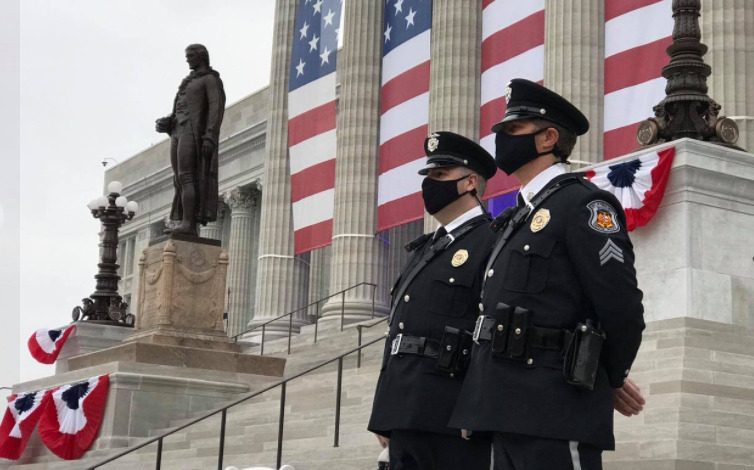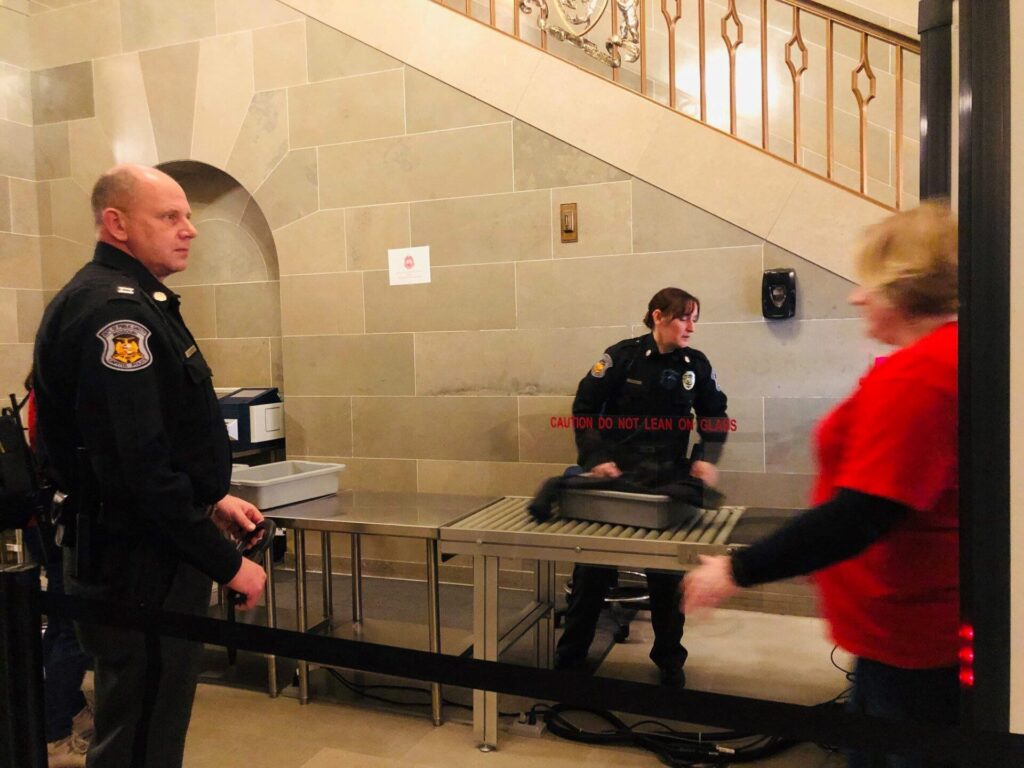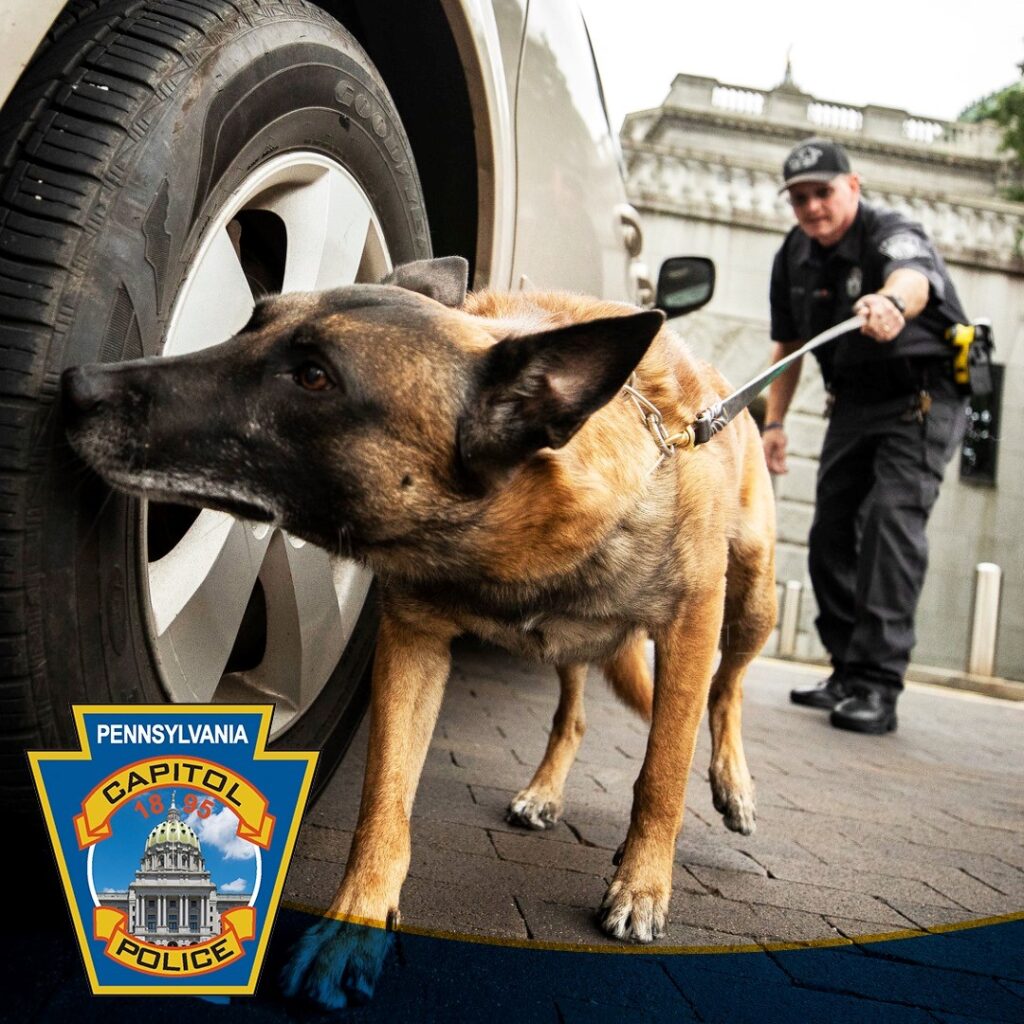
A few years ago, I composed a self-explanatory article titled “All Kinds of Police.” The piece explored the varied types of law enforcement entities among the roughly 18,500 which exist across the American landscape, fulfilling preservation and protection roles in a potpourri of jurisdictions to include railroad operations, college campuses, postal service sites, Indian reservations, and any level of sovereignty whereby cops are manifested for “protect and serve” initiatives.
Capitol police departments (PDs) are among the lot.
And after the January 6, 2021 debacle at the U.S. Capitol building and its doors/windows breached, its hallways a cacophony of hellions, and its police force dubiously prepped and in the reticle of recklessness, all 50 state capitol police factions are examining their jurisdictional responsibilities, their ostensible logistical defenses, the policies stipulating visitor screening (lax processes), and permissions regarding armed individuals exercising Second Amendment rights where lawmakers write the rules.
From what I’ve read, some hatches remain unbattened at our country’s state capitols. It seems the January 6 eruption/invasion is a beckoning for enhanced security measures at these government hubs.
Akin to a forest fire, the conflagration embers smolder and give way to reformed vibrancy.
A report/expose by a government watchdog publication indicates the U.S. Capitol breach was the spark which all other state capitols need to heed. Although it is not pretty, the matters we are about to explore could/should be remedied to avoid a repeat.
Because the findings expose vulnerabilities, and illicit-minded types are reading/listening, I refrain from citing specifics/locations under consideration; instead, we will explore in general.
After pretty much the entire global population digested (or tried to) what transpired at our U.S. Capitol on January 6, gagging gives way to notions of novel thinking, actionable plans, and ramped-up refortification with respect to the uniformed men and women on the frontlines (front steps; initial perimeters), their stewarding over the government domains, and the leadership which seemingly failed those entrenched officers pushing back against the frenzied throngs who left civility in the glovebox.
No fault of the cops —they make the best with what they are given, even when denied pertinent equipment, training, robust staffing, etc.— some Capitol buildings reportedly lack post-9/11, contemporary security measures and policies to situate against introduction of potentially perilous “visitors.”

According to government watchdog sources, nearly one-third of state capitols do not utilize metal detectors and roughly 20 statehouses do not prohibit guns within their premises, emphasizing what they call a “security gap” underscoring disparities among state capitols and their security measures.
Conversely, it is mature for any entity and anyone employed by it to acknowledge the room for growth and reformation so that operational capacity is achieved. In that context, what are the 50 capitol police departments doing to enhance security and preserve pedestrians either working in or visiting government dwellings?
Two days before this writing, the Michigan State Capitol Commission rendered a unanimous vote banning the open-carry of firearms in their premises (effective immediately), namely due to upcoming protests (Biden Inauguration). Further, the Commission ruled concealed carry permits held by the public and legislators would still be honored, and that open carry will be undeterred on Capitol grounds.
I bet frontline cops at Capitol buildings are relatively elated to have administrations effect change. Such maneuvers not only ensure safety among government workers and elected officials but also officer safety and the security of citizens who visit the House where directives are drawn. Bottom line: everyone wishes to go home in one unaltered piece, dogs included.

Echoing that point, The Hill reported that “Concerns are growing over security threats surrounding President-elect Joe Biden’s inauguration next week, after the attack on the Capitol rattled the country’s confidence and put scrutiny on law enforcement and safety in Washington.”
Interestingly —and much to my surprise— some state capitols are only now considering installing metal detectors at Capitol building egresses.
The Hill report claimed that “Washington is being fortified,” adding that “15,000 National Guardsmen will head to the nation’s capital to assist with security ahead of the inauguration.” Many have already arrived, and USA Today posted a picture of National Guardsmen preserving energy on the hard floors of the U.S. Capitol hallways as legislators traipsed on by.
If intelligence is accurate, and untold numbers of anti-Biden sorts plan to rebel against the President-elect’s Inaugural event by presenting at state capitols across the country, are state-level governments dialed in accordingly? Are other Capitol buildings beefing up security measures to augment their respective police forces emplaced to preempt the rage we saw on January 6?
As of this writing, reports indicate they are starting to implement more robust security to aid capitol cops responsible for the expected push from untold numbers of demonstrators.
Per The Hill reporters, “It’s not just Washington that is on high alert. The FBI is warning of potential armed protests at state capitols across the country in the days leading up to the inauguration.
“Clint Watts, a former FBI official and fellow at the Foreign Policy Research Institute, said he is more worried about attacks on less-protected targets, such as state capitols, rather than the U.S. Capitol because of how extreme the security will be on the Inauguration Day.”
Thus, we have yet another concern pertaining to law enforcement officers who bravely stand between good and evil…full knowing that the dangers are coming full-force and their own force must repel such a tsunami. It’s a tried-and-true exemplification which largely played out on January 6, with a majority of the assigned minority of U.S. Capitol police officers quick-thinking in every step, despite the seeming odds against successfully quelling the massive push of hellions.
No one anywhere wants to see that play out again at any of our 50 Capitol sites. Yet while logistics are being considered and operational surety may still be remiss at some capitols, Michigan is heeding the alarm and responding with what may be long overdue factors for their Capitol police force to effectively fulfill their duties.
The Michigan “Capitol has already instituted many enhanced security measures including more cameras and more state police personnel. We have always tried to maintain that this building is open to the public. How do we do that? That’s where the difficulty comes in,” explained John Truscott, vice-chair of the Michigan State Capitol Commission.
“What else do the state police need?” asked Mr. Truscott. (If only such voices with offerings like this were around before mayhem ensued—better late than never.)
Lt. Brian Oleksyk of the Michigan State Police answered promptly: “There are no metal detectors at the doors. That is being reviewed by the Capitol Commission.”
One would think in a post-9/11 day and age that such ingredients would have been implemented long ago, but no. It’s now up for consideration, with few days left before mass-protest predictions materialize.
State Attorney General Dana Nessel offered a tweet on the matter: “Let me repeat this in no uncertain terms: Our state capitol is not safe. I would advise people not to go to our state Capitol if they can avoid it.” He said that earlier this week; today, security measures in Michigan are fastidiously under way. And Michigan Capitol cops will handle matters much like they did when folks stormed the Capitol in April, with a beef regarding Governor Whitmer’s stringent COVID regulations.
As Rod Meloni reported then, “Protest moves inside Michigan Capitol. Crowd attempts to get onto House floor. Lots of Michigan State Police and House sergeants at arms blocking door.”
There are other examples being bandied about in state Capitol circles. And in all of this is the typical staple —the law enforcement officer— whose duties and vigilance remain despite the deficiencies in provisions from government. LEOs still stand guard, with significant risk to themselves due to venues accessible to even malcontents with nefarious mindsets/missions.
Indeed, the raucous political climate which culminated in the January 6 uprising in D.C. is weighing heavily on the minds of those occupying the 49 other state capitols calculating how to optimize security and bolster their Capitol Police.
Again: better late than never. But why must cops be needlessly pressed to deliver utopia while historical examples and forward-thinking luminaries offer meaty foresight to preclude weaknesses and avoid dangers to those same LEOs and the law-abiding public who wish to take part in our governmental process?
In a way, the U.S. Capitol melee, although disgusting on its face, seems a blessing in disguise…compelling the other state capitol powers-that-be to oil the gears and implement modernized fortification for the safety of all.
Preceding events equating to an increasingly volatile environment amounting to rebellion booting in the front door compellingly demands government figureheads and police executives to be more deliberate in planning, financing, and duly equipping law enforcement to carry out safeguarding successfully.